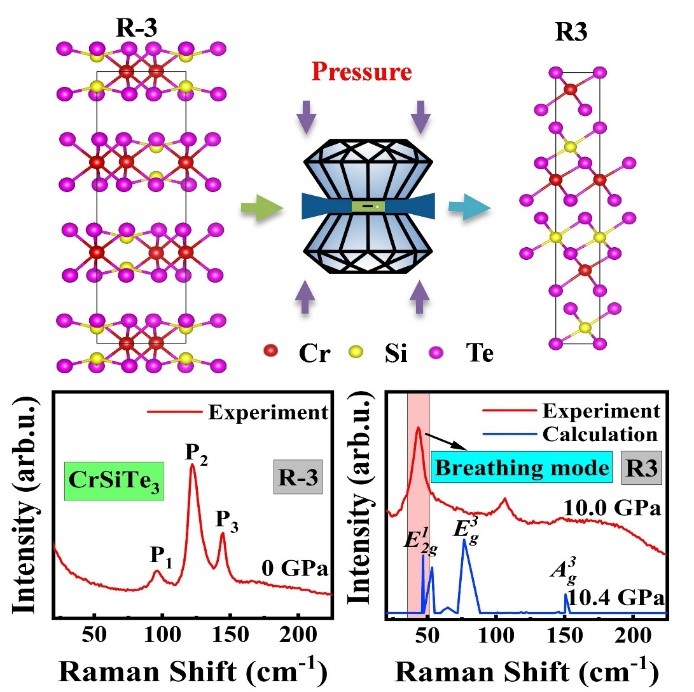
According to research published in The Journal of Physical Chemistry Letters, Prof. DING Junfeng from Institute of Solid State Physics (ISSP), Hefei Institutes of Physical Science, together with Prof. WANG Weihua from Nankai University, clarified high-pressure structure of CrSiTe3, which highlighted the ultralow-frequency Raman spectroscopy on detecting the interlayer coupling on Two-dimensional (2D) van der Waals materials.
2D magnetic materials have attracted significant attention owing to their highly tunable physical properties and potential applications in novel spintronics. Some of them can still exhibit intrinsic long-range magnetic order when they are exfoliated even into a few layers, such as ferromagnetic semiconductor CrSiTe3 with a centrosymmetric layered structure. Both superconductivity and enhancement of ferromagnetism, usually competing for orders, have been observed in CrSiTe3 at high pressure. However, the high-pressure structure of CrSiTe3 remain unclear, hindering understanding of pressure-induced novel physics.
In this research, by using ultralow-frequency Raman spectroscopy at high pressure, the scientists were able to observe the interlayer breathing mode located at approximately 42.1 cm–1 for the first time in CrSiTe3. Theoretical calculations confirmed a phase transition from the R-3 phase to the R3 phase, which was accompanied by a noticeable enhancement of the Curie temperature. The calculated phonon modes of R3 symmetry were in good accordance with the emerged Raman bands of CrSiTe3 at high pressure.
PAN Xiaomei, first author of the paper further described the research process. Thin films of the samples were obtained via mechanical exfoliation and then loaded into a sample chamber. High-pressure Raman experiments were conducted on CrSiTe3 using a diamond-anvil cell (DAC) at pressures of up to 14 GPa. Ultralow-frequency Raman spectroscopy was collected by backscattering along the crystallographic c axis, using a 532 nm excitation wavelength laser. To investigate the geometrical and electronic structures of CrSiTe3, Vienna ab initio simulation package (VASP) was utilized based on the plane wave basis method.
This research could pave the way for further studies into the unique properties of 2D van der Waals ferromagnetic semiconductors like CrSiTe3, potentially leading to exciting new applications in areas such as spintronics and quantum computing.

The crystal structure and Raman spectra of CrSiTe3 at ambient pressure and high pressure, respectively. (Image by PAN Xiaomei)

Raman spectra of CrSiTe3 flakes under pressures up to 14 GPa at room temperature. (Image by PAN Xiaomei)